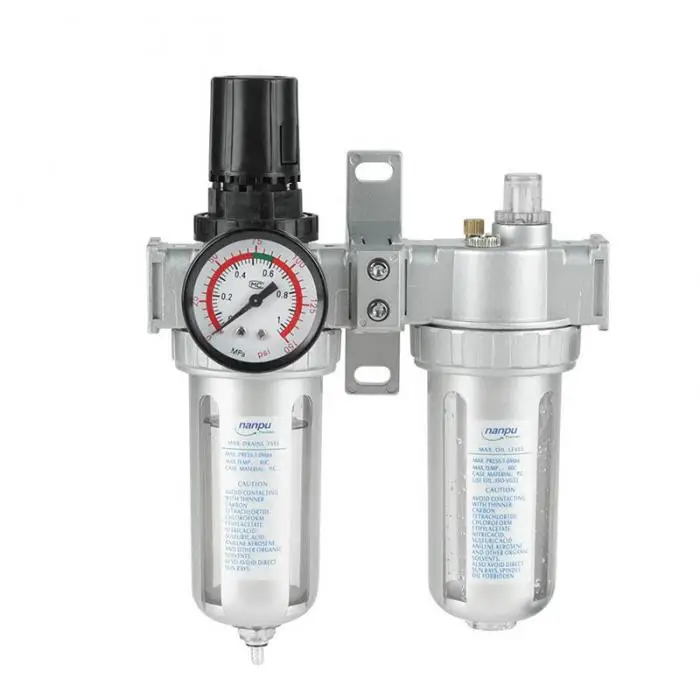Most pneumatic tools require air tool oil for optimal functionality. This oil is often expensive and sometimes hard to come by, hence the need for viable alternatives.
This article unpacks potential alternatives and how to use them.
Pneumatic oil is essential for all forms of pneumatic equipment since it provides lubrication while the equipment is in use. Here, the oil ensures less friction between moving components, prevents moisture and rust build-up, dissolves sludge, and protects O-rings.
The moving parts in air tools don’t touch. Instead, got a thin film of oil between them and they have various seals and O-rings to ensure airtight sealing. Compressed air moves the parts back and forth. To ensure proper operation, these parts require lubrication, ensuring that the seals and O-rings move as they should without getting damaged.
Following are some of the effective air tool oil substitutes. Check the tool manual before using any of these alternatives to ensure that the specific oil is safe for your application.
The transmission fluid works well for air tools, acting as a lubricant and generally allowing it to work as it should. ATF reduces wear and tear in air tools without creating residue on surfaces.
Automatic Transmission Fluid contains several useful additives including anti-oxidation additives, detergents, anti-foam compounds, etc. ATFs are inexpensive and are perhaps the best air oil substitute.
I suggest the Dexron Automatic Transmission Fluid as a cheaper alternative to air tool oils. Before using this oil, check for compatibility with your air tool.
Marvel Mystery Oil is suitable for most applications and can be used with most pneumatic tools. It contains a strong solvent, which will help lubricate nearly any tool under most conditions, dissolving any gummy residue inside the tool.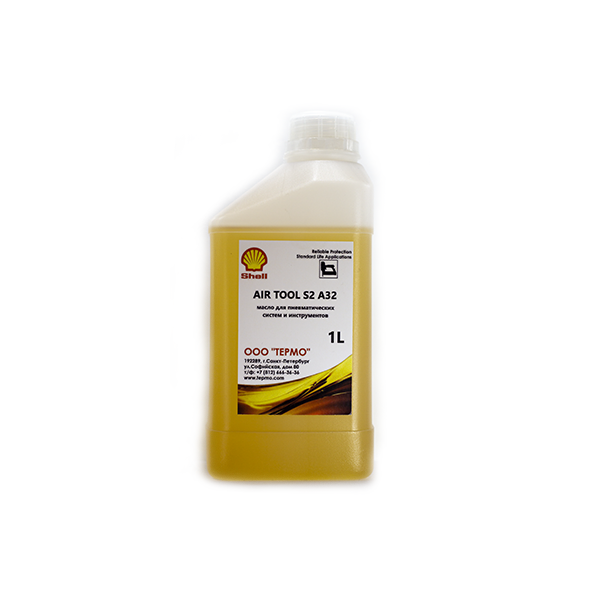
Marvel Mystery Oil – Get Here
It’s slightly more expensive than other all-purpose air tool oils but works really well and lasts long.
Hydraulic oils are ideal for high-pressure hydraulic applications, but they can also be used to lubricate lightly loaded compressors.
However, hydraulic oils usually have high viscosity and you cannot use oil with high weight on pneumatic tools.
Go with the ISO 32 hydraulic oil. This oil has a low viscosity at low temperatures, making it compatible with most pneumatic applications.
3-in-1 Oil is a petroleum-based oil that’s been in use for generations.
Generally, petroleum-based lubricants are not ideal for power tools as they can cause damage to elastomeric rubber sealings. The 3-in-1 oil seems to be the exception to the rule when it comes to petroleum-based oils and air tools. This oil is thin enough to work well in pneumatic power tools and doesn’t leave a gummy residue.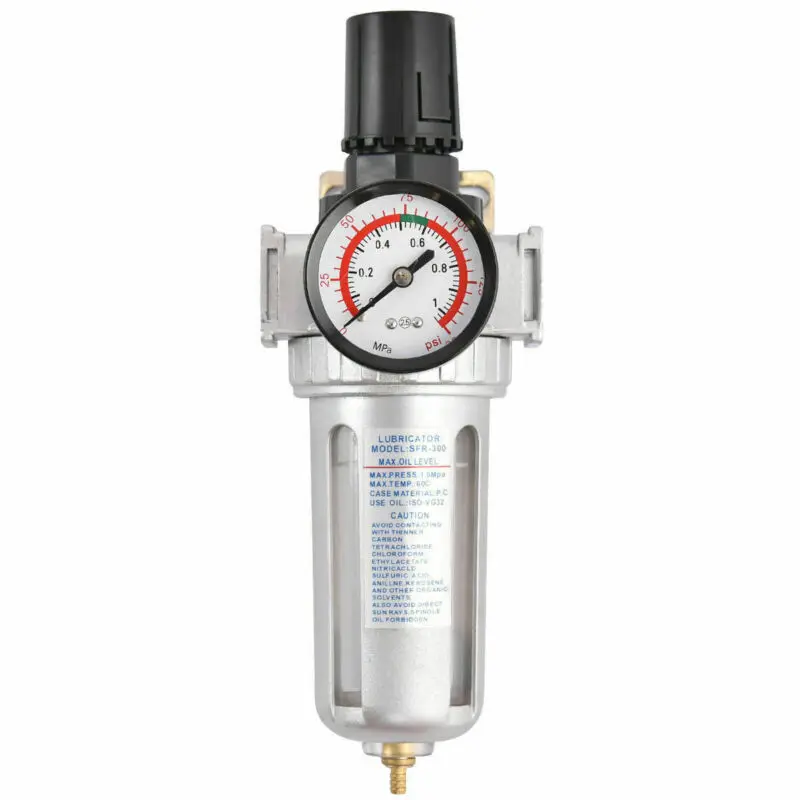
It’s perfect for most household applications with moving parts, like hinges, tools, nuts and bolts, and sewing machines.
Get 3in1 Oil for Pneumatic Tools
The 3-in-one air tool oil also dissolves sludge and gummy residue in your tool, operating it more smoothly. Make sure that you get the pneumatic tool oil and NOT the multipurpose penetrating oil.
As a last resort, you could use 10W 30 low-weight synthetic motor oil. Make sure that it is non-detergent and paraffin-free to avoid the build-up of wax inside your tool.
The above listed are some of the common alternatives to pneumatic tool oils available, and these work well in most applications. Power tool equipment manuals should always indicate which pneumatic tool oil to use with the equipment, how much of it, and oil top-up frequency. When in doubt, always refer back to the manual.
Air tool oil tends to be thinner than compressor oil.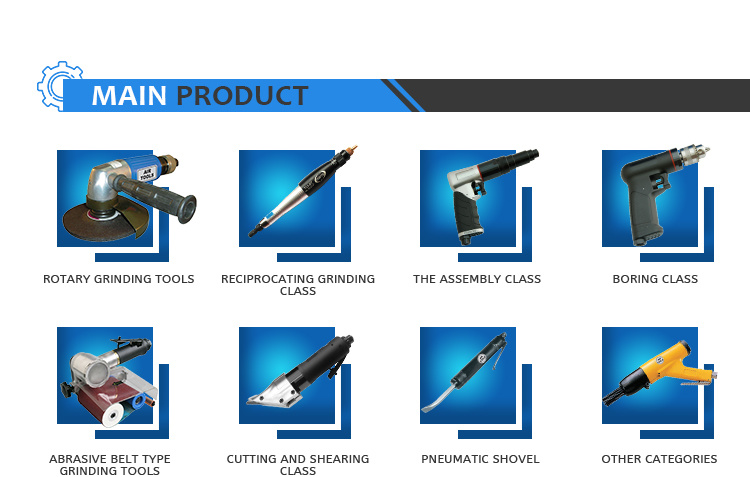 It also contains anti-rust agents. You can use a low viscous compressor oil to lubricate your air tools, but not the other way around.
It also contains anti-rust agents. You can use a low viscous compressor oil to lubricate your air tools, but not the other way around.
This is a common lubricant found in many households since a sewing machine needs to be oiled on a regular basis. So, can sewing machine oil be used for pneumatic tools?
If you have no other alternative, you could use sewing machine oil as air tool oil, although it is not recommended.
Unlike air tool oils that are mineral oils or synthetic, the sewing machine oil is a petroleum-based lubricant. Sewing machine oil may react with the rubber sealing and has a higher viscosity.
Your power tool only requires a couple of drops of oil, and one-time use of sewing machine oil is unlikely to cause any damage. However, continuous use of this lubricant can disintegrate the O-rings and will result in air leakage or jammed pistons.
Lubricating oil alternatives are legion, but some options are detrimental to your pneumatic tool’s operation.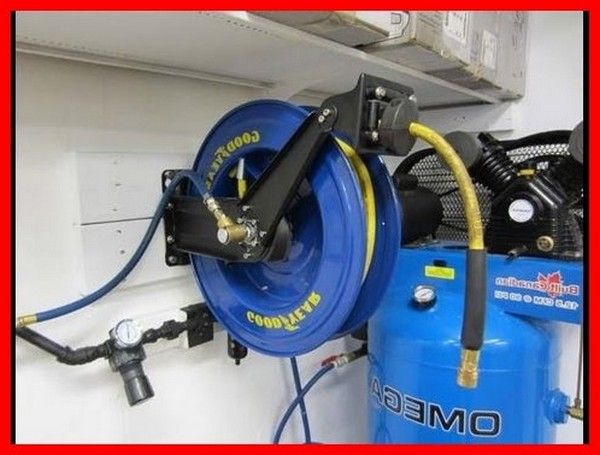 Here are the two most common ones to avoid:
Here are the two most common ones to avoid:
Diesel is petroleum-based and combustible. It’s never a good idea to use flammable, petroleum-based oils as lubricants in power tools. The petroleum reacts with the rubber made to manufacture the O-rings and other sealers inside the pneumatic tool, disintegrating them. This will create a gummy residue inside the tool, potentially damaging the tool.
In air tools such as impact wrenches or impact drivers with a built-in hammering mechanism, it can ignite diesel causing damage to the vane motor and anvil of the tool.
No, WD40 oil isn’t designed for pneumatic tools and, as such, could potentially damage your air tools. It is a degreaser that is used for removing rust, cleaning, etc. WD40 is a penetrating oil that swells the rubber sealants and in the long run dries the moving parts and can result in wear and tear.
Hence it is not recommended.
Vegetable oil produces a sticky residue inside air tools, affecting their performance and causing damage. This residue attracts dust, creating a solid deposit inside your tool or machine.
This residue attracts dust, creating a solid deposit inside your tool or machine.
Oiling air tools is a crucial step in tool maintenance. Choosing the correct oil and applying it according to the manufacturer’s guidelines ensures that your power tools function optimally and have a long lifespan.
Typically, two types of oils are available for air tools: mineral-based oil and synthetic oil.
Mineral-based pneumatic tool oils are the most commonly used and are considered the standard by most. However, this version is far more volatile than its synthetic counterpart. It thus leads to more significant oil loss during tool operation.
Mineral oil is generally more reactive than synthetic oil, and these reactions cause it to clump up. The tool life span shortens when this occurs, which counts against using mineral oil.
Synthetic tool oils are generally more expensive than their mineral-based counterparts. This increased expense is often worth it since it is designed as a high-performance oil. They reduce friction inside the tool, prolonging its lifespan.
This increased expense is often worth it since it is designed as a high-performance oil. They reduce friction inside the tool, prolonging its lifespan.
Synthetic oils aren’t reactive like their mineral-based counterparts and thus won’t clump up inside the tools.
Air tool oils act as a lubricant for pneumatic tools and thus have a low viscosity. They also act as anti-rust agents and clean the tools while in use. Air tool oils contain solvents that dissolve gum and sludge build-up within the tools. This type of build-up could potentially reduce the tool’s speed and power.
In short, the oil should have the following properties.
Air tool oils’ low viscosity allows them to be easily atomized, spreading throughout the tool by compressed air.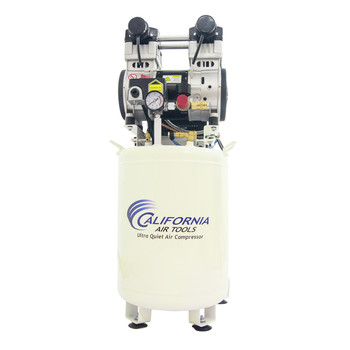 SAE (Society of Automotive Engineers) specifications govern the weight and viscosity. Typical applications call for ISO 32 grade or SAE 10 oil.
SAE (Society of Automotive Engineers) specifications govern the weight and viscosity. Typical applications call for ISO 32 grade or SAE 10 oil.
Here, the 10 represents an oil thickness rating under operating conditions, specifically how temperature affects it.
Oils with a viscosity between ISO 22 to 46 can be used for pneumatic tools, depending on the application.
Oiling air tools is an essential step in basic maintenance. It should be done as frequently as is indicated in the user manual. This differs between tools and applications. If you use your tools more often, you need to oil them more often. For regularly used tools, it’s best to do it according to a set schedule. This ensures that you don’t forget and skip a cycle, potentially compromising your tool’s functioning.
To oil your air tool, you need specific oil containers or tools. These vary depending on the tool and application, so it’s best to check the user manual for more information.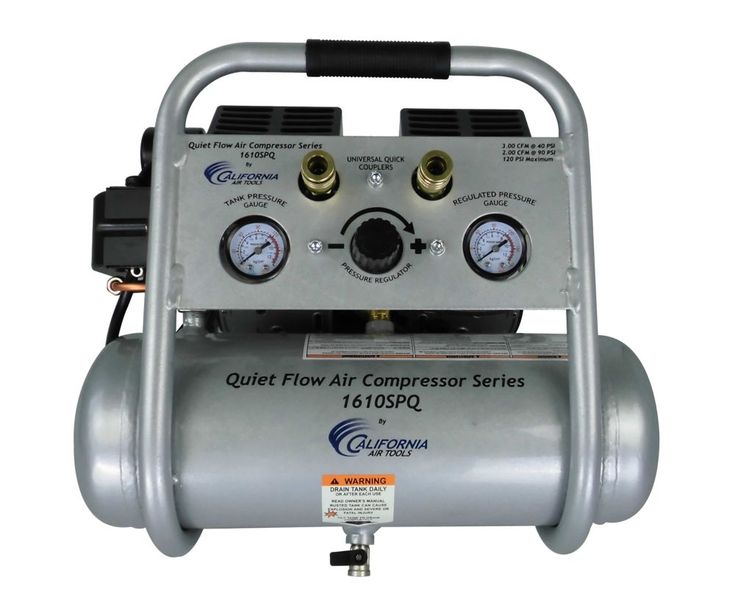 The main aim of these tools is to release oil slowly, helping ensure that you add the right amount of oil to your tool. Adding too much or too little could damage your tools.
The main aim of these tools is to release oil slowly, helping ensure that you add the right amount of oil to your tool. Adding too much or too little could damage your tools.
There are many methods for oiling air tools. The most common ones are outlined below.
This is the most common method of oiling nail guns, impact wrenches, air hammers, die grinders, etc.
If your tool doesn’t a specific oil reservoir, disconnect the compressed air pipe from the inlet of the power tool. Then you could complete the task by adding a few drops of oil to the air inlet. Once you connect the tool’s inlet to the air hose, the compressed air will distribute the oil from here.
Some tools have an oil reservoir. Use a screwdriver or hex wrench set to open the reservoir if yours is like this. Drip oil here until you reach the required volume as prescribed in the manual.
An air tool oiler is specially designed to add oil to pneumatic equipment.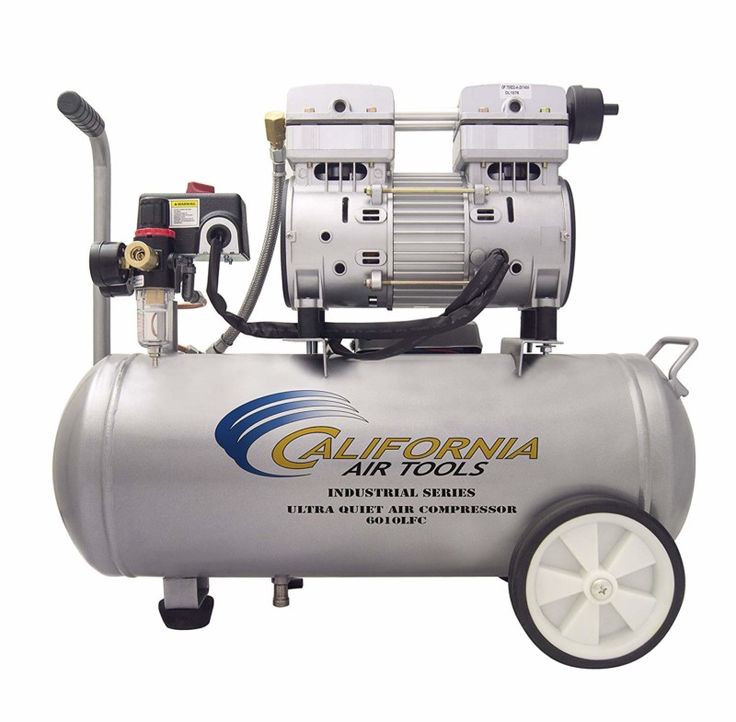 Fill the oiler with the correct amount of air tool oil to use this. Next, attach the oiler before the tool’s air inlet. The oil will be distributed through your tool as air passes through the tool oiler. Ensure that the air tool oiler is attached at the tool end of your air system, not at the compressor side. Typically, multiple tools will run off the same compressor system, which may have differing oil needs. Attaching the pneumatic tool oiler to the compressor side will distribute the oil to all equipment and thus potentially damage tools that aren’t compatible with that oil.
Fill the oiler with the correct amount of air tool oil to use this. Next, attach the oiler before the tool’s air inlet. The oil will be distributed through your tool as air passes through the tool oiler. Ensure that the air tool oiler is attached at the tool end of your air system, not at the compressor side. Typically, multiple tools will run off the same compressor system, which may have differing oil needs. Attaching the pneumatic tool oiler to the compressor side will distribute the oil to all equipment and thus potentially damage tools that aren’t compatible with that oil.
A lubricator is attached to the air system, similar to an air tool oiler. This tool releases oil into the air system at a controlled rate, ensuring that the tools are appropriately lubricated while in operation. Adjusting the drip rate (oil-fog or micro-fog) alters the rate at which the oil mist is released into the system – this rate depends on the application.
FRL is short for Filter, Regulator, Lubricator. This unit supplies lubrication to the air tool. It also contains an air filter and regulator. The air filter prevents dirt from entering the power tool’s system. At the same time, the regulator maintains pressure on your tool according to manufacturer guidelines. Attaching this unit is a slightly larger task, but it precisely manages the oil supply to your air tool.
This unit supplies lubrication to the air tool. It also contains an air filter and regulator. The air filter prevents dirt from entering the power tool’s system. At the same time, the regulator maintains pressure on your tool according to manufacturer guidelines. Attaching this unit is a slightly larger task, but it precisely manages the oil supply to your air tool.
All air tools don’t use oil. There determining factor here is the driving mechanism. Generally, if the tool is driven by air, it needs air tool oil. If it’s only controlled by pneumatics, but not driven by compressed air, it doesn’t need to be oiled. There are exceptions to this rule, however.
Some pneumatic tools are made to be oil-less. These include oil-free nail guns for wood finishing, pneumatic screwdrivers used in clean-room conditions, etc. where you cannot have any oil on the final product. Check the user manual if you’re unsure whether your air tool needs oil.
Contents
 Automatic Transmission Fluid (ATF)
Automatic Transmission Fluid (ATF)Home » Air Tools
Hey! This site is reader-supported and we earn commissions if you purchase products from retailers after clicking on a link from our site.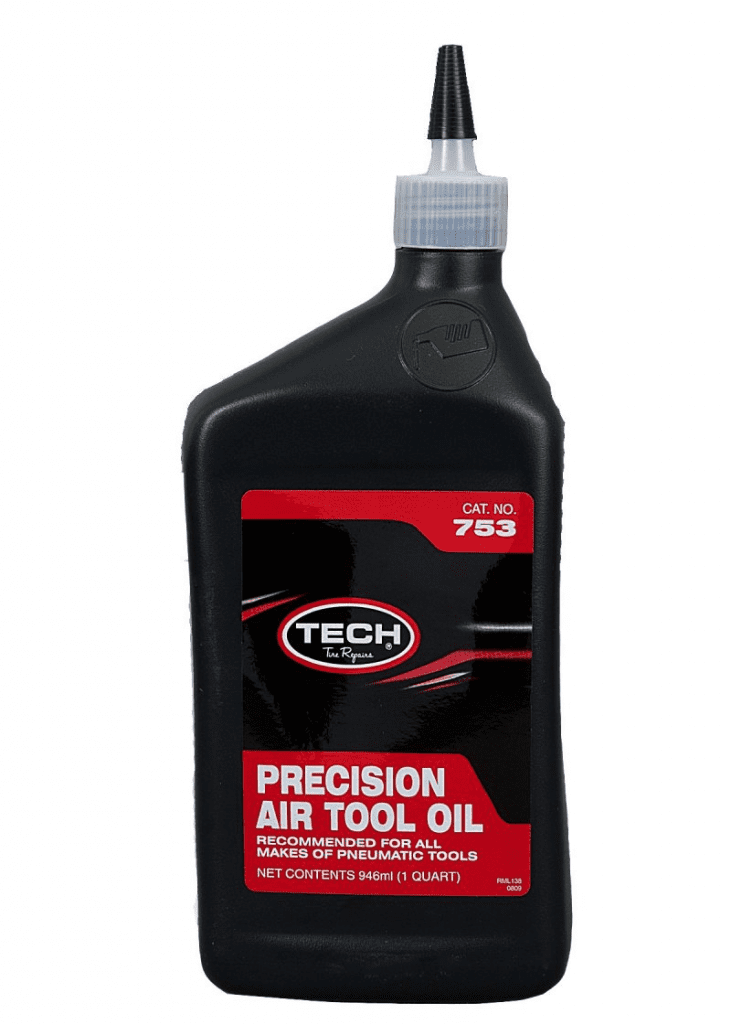
Sometimes you may not be able to find air tool oil for your air tools, so you will need other lubricants, or substitutes, that you can use instead. This article will provide you with all the relevant information on air tool oil substitutes, alternatives and key considerations.
Typically when looking for an alternative or substitute to air tool oil, you have the following 3 options:
Now let’s take a look at each of these pneumatic tool oil alternatives in more detail!
Automatic transmission fluids are usually used in car transmissions because they can perform tasks like:
Air compressors and air tools have similar stresses and so also require these tasks to be performed by their lubricants.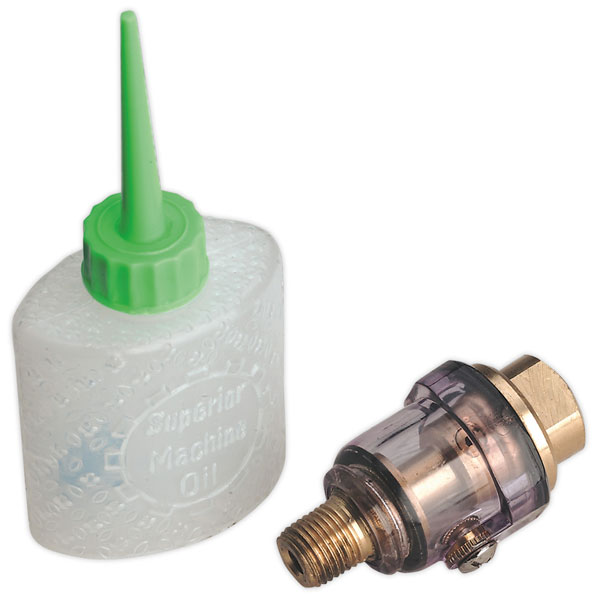 Air tools will produce heat while running and so will need a fluid that can resist breakdowns when heat is present.
Air tools will produce heat while running and so will need a fluid that can resist breakdowns when heat is present.
ATFs contain detergents that reduce the deposits released in the high heat area so that the tool is free of deposits. Though, these detergents themselves may cause damage to your air tool.
ATFs are formulated with enhanced additive packages and robust base oils. They contain antioxidants, anti-wear agents, demulsifiers, and detergents. However, they’re most likely to be incompatible with your air tool unless you find one that your manufacturer has given the green light to.
The detergents in ATFs may cause your air tool to become damaged a lot sooner than expected. Using an ATF within your warranty period, and then the tool breaking, will not allow you to recover any damage.
Hydraulic oils have certain characteristics that may make them suitable for air tool substitution. They have a low viscosity at a low temperature allowing the oil to flow more fluently which is important in an air tool.
Hydraulic oils are also immune to oxidation, which will protect your air tool from rusting. Typically, 10W hydraulic oil is great to use in winter when temperatures are cold, and up to 30W in summer. Though hydraulic oils can be a good lubricator for your air tools, you must make sure that the specific oil is compatible with your air tool.
Synthetic oils are made with a base created of synthetically or artificially made chemical compounds. Synthetic oils tend to be very refined due to the amounts of processing they go through, and so, may only be used for specific cases only.
Synthetic oils will be able to protect your air tools from overheating as they work well in both low and high temperatures. They can also help to reduce noise. Typically 20W synthetic oils are recommended for cold temperatures and 30W oils for warm temperatures.
The thing with synthetic oils, however, you must ensure that the synthetic oil you obtain is for air tools, otherwise, you risk damaging your air tools.
If you’re considering purchasing and using a substitute or alternative air tool oil than the one recommended you must be cautious. The purpose of the oil recommended by the air tool manufacturer is to not only lubricate but also flush particulate from the tool.
The viscosity and fluid properties within the tool oil play a big part in this success, and you may struggle to find the exact properties in a substitute. Too thin of a replacement oil and it won’t last long, too thick of an oil and it will be very difficult to add and may stick around too long, not serving its flushing purpose. Therefore, the chemistry behind the product is very important.
You should always check your tools manual or contact the manufacturer directly before putting any substitute or alternative in your air tools. This will clarify whether it is suitable or not, and ensure you get optimum performance from your tools.
Can you use WD40 as air tool oil?
Nope, you should never use WD40 as air tool oil.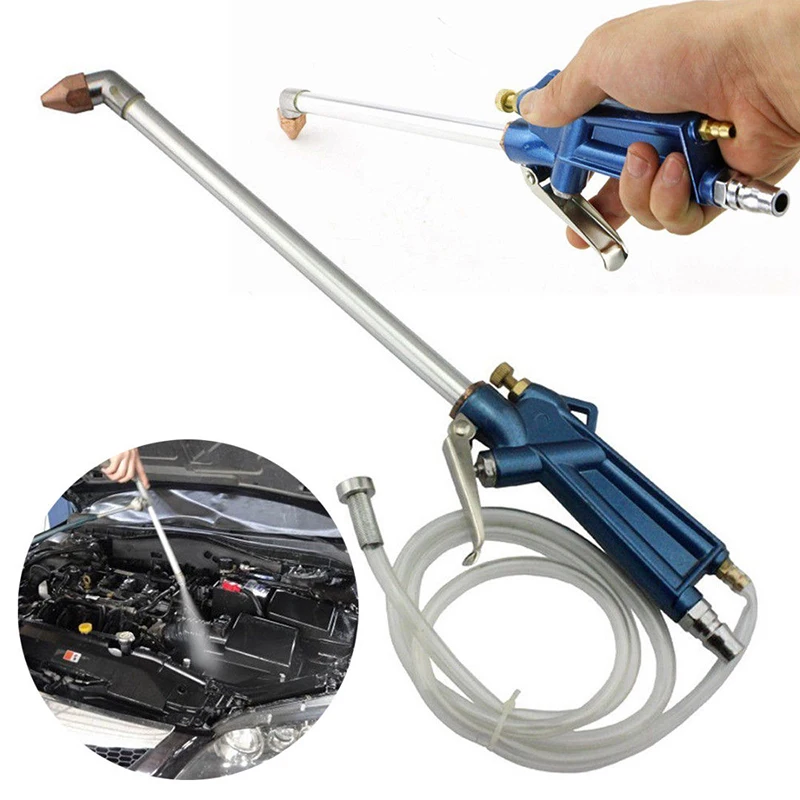 WD40 will eat the rubber seals and is no good here.
WD40 will eat the rubber seals and is no good here.
What oil do you use to lubricate air tools?
Typically mineral oil is designed for use to lubricate air tools. This oil contains anti-foaming and anti-gumming additives which makes it the perfect choice for air tools.
What can I use for nail gun oil?
You should only use lubricating oil specifically made for pneumatic tools like Marvel Mystery or Senco pneumatic tool oil. Other oils will lack the correct viscosity grades or may contain detergents that destroy the seals.
Additional oil reading:
If you have any questions regarding air tool oil substitutes and alternatives, please leave a comment below, with a photo if applicable, so that someone can help you!
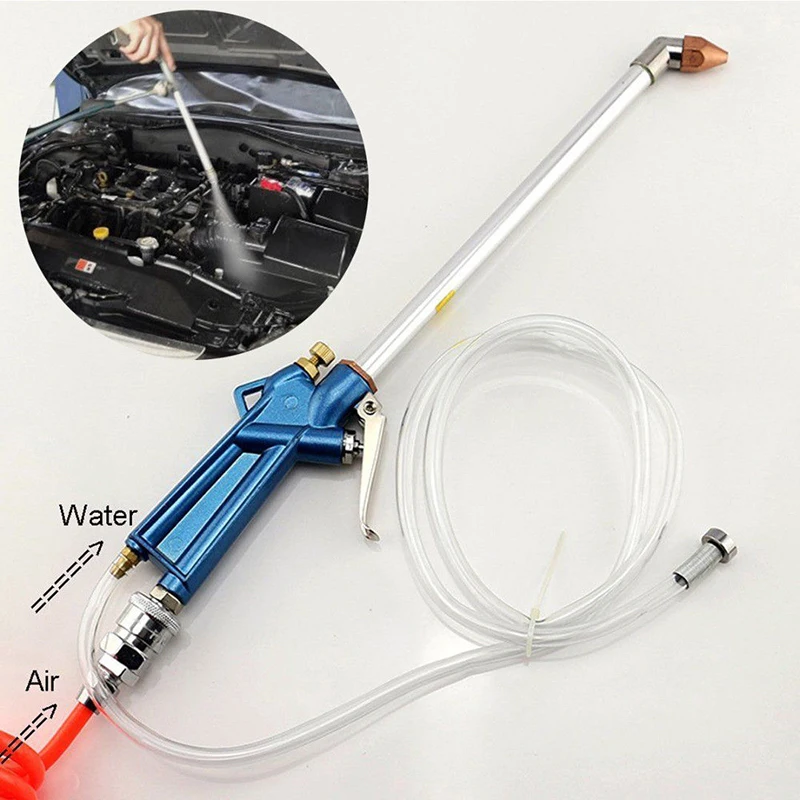 What kind of oil to fill in the lubricator?
What kind of oil to fill in the lubricator? Compressed air is used to operate pneumatic tools, which are used in many industrial and repair areas. But the air leaving the compressor equipment is not ready for use without proper preparation. Condensate, oil and other contaminants in the compressed air can cause significant damage to the tool, significantly reducing its service life. Therefore, the air must be cleaned and lubricated before being fed into the tool by installing a dehumidifier and lubricator or a modular group in the pneumatic line, which provides comprehensive preparation.
More details about the preparation of compressed air are described in a separate article.
In most pneumatic tools, such as pneumatic wrenches, pneumatic ratchets, pneumatic chisels, pneumatic screwdrivers, and so on, compressed air is used to start the drive (motor). Therefore, in addition to air purification, a special oil must enter the air stream, which provides lubrication of rubbing internal mechanisms.
The lubricator is used in pneumatic lines to spray oil into the compressed air stream, providing lubrication to the internal working parts of pneumatic tools and their components, including drive cylinders, valves and motors. The lubricated air helps to reduce wear, keeping your air tool running smoothly and consistently.
Lubricators are divided into:
In the first case, the lubricator is permanently installed in the air preparation system after the pressure regulator or after the dehumidifier with regulator. The entire system is installed as close to the instrument as possible. The length of the hose between the lubricator and pneumatic equipment must not exceed 10 meters. It is worth remembering that such a lubricator should be located above the tool, since the oil aerosol does not move upwards well.
A multi-point lubricator can serve several posts with a tool.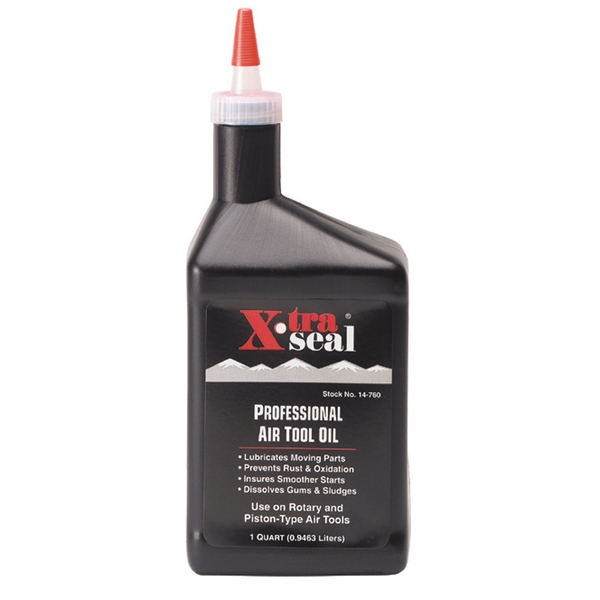 Lubricators are available with different inlet/outlet inch diameters, as well as different oil flask sizes.
Lubricators are available with different inlet/outlet inch diameters, as well as different oil flask sizes.
The flow rate depends on the diameter of the inlet/outlet, so the lubricator should be selected based on the amount of air consumed by the tool to ensure maximum efficiency for all operators. Most models have a special screw that allows you to adjust the intensity of the oil supply.
In the second case, the lubricator is installed immediately after the tool handle and provides lubrication to a single tool. In addition, such a lubricator can be installed in the pneumatic line together with the main model for greater efficiency.
Air entering through the inlet of the lubricator passes through the needle valve, which is connected to the receiving tube. This tube is immersed in a flask with oil. The oil is pulled up by the Venturi effect and ejected as an aerosol into the outlet, and then through the hose, along with air, enters the tool.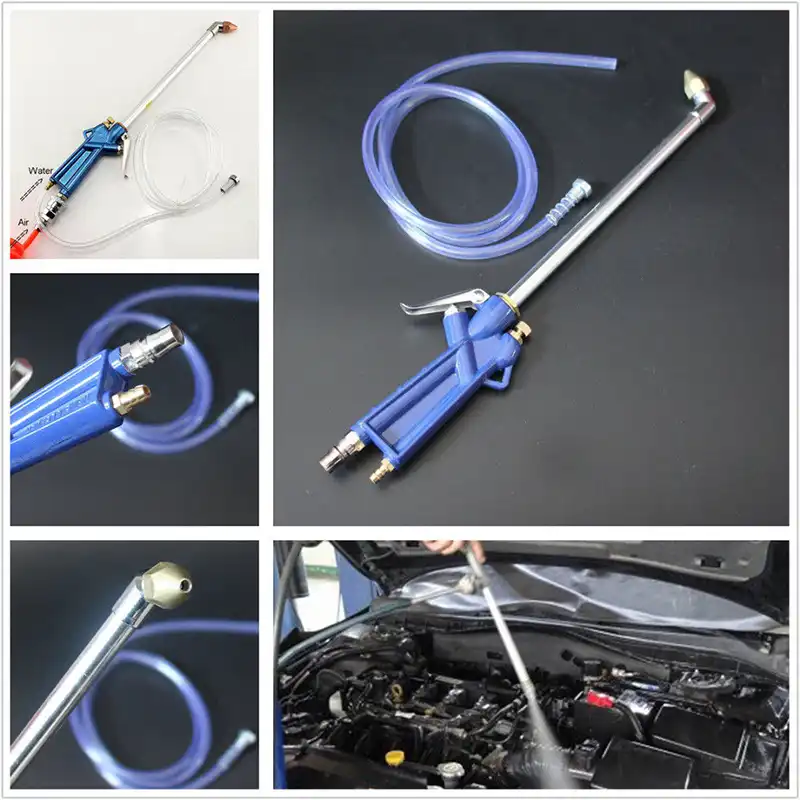
Oil is poured into a stationary lubricator using a funnel through a hole located on the upper plane of the equipment. As a rule, the hole is screwed with a plug for an internal hexagon. If the lubricator does not have a special hole, then the oil is poured into the removed flask, and then installed back.
Oil is poured into a small lubricator through a hole on the body, which is unwound with either a Phillips or a flat screwdriver. The oil is dropped in using a small plastic oil can. In order to control the oil level in the lubricator, there are two marks on its body - the maximum and minimum volume levels.
A special hydraulic oil with a viscosity of 32 must be used.
For example:
Contrary to popular belief, pneumatic lubrication is also essential.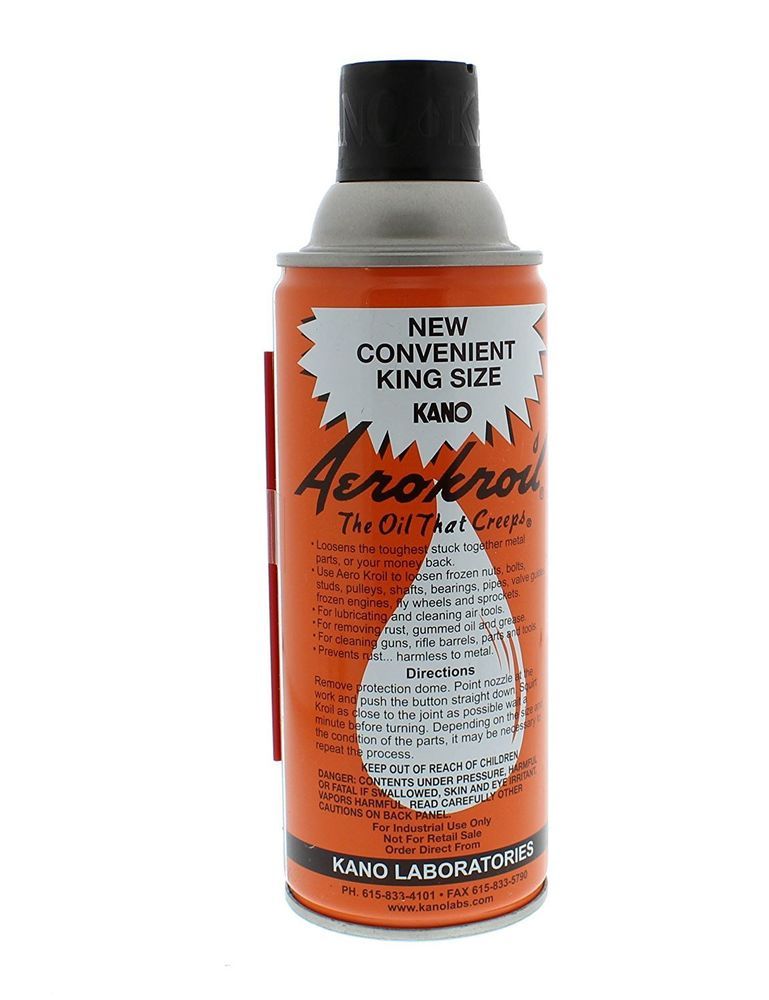 Lubricating oil for pneumatic tools differs from generally accepted standards, due to the specifics of the application. The liquid is applied by dust method, which excludes the use of motor and transmission compounds. Our editors have collected information about the varieties of mixtures and their scope.
Lubricating oil for pneumatic tools differs from generally accepted standards, due to the specifics of the application. The liquid is applied by dust method, which excludes the use of motor and transmission compounds. Our editors have collected information about the varieties of mixtures and their scope.
Contents
The air mixture, flowing to the rotating parts, guarantees an extension of the operating life of the unit and eliminates accidental breakdowns caused by wear of the friction pairs.
Lubricator used in grinders, valves, engines, gearboxes, high pressure pressure lines.
As of 2022, there are 2 types of designs.
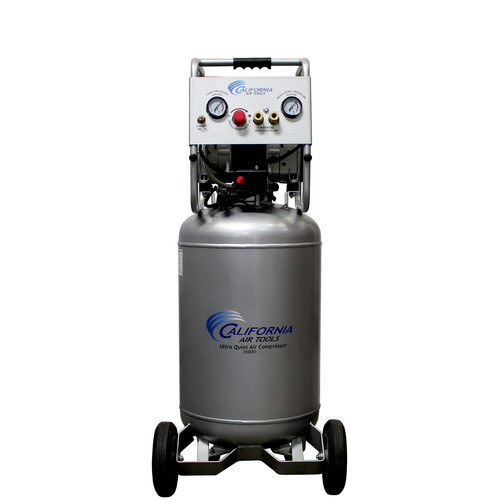 Used to service multiple tools. The device is mounted inside the line no further than 10 meters from the distant device.
Used to service multiple tools. The device is mounted inside the line no further than 10 meters from the distant device.
Pure lubricant without foreign additives or mechanical inclusions is poured inside the device. Some models for cleaning liquids are equipped with additional filters. This approach is necessary due to design features: the spout nozzle, as a rule, is no more than 1 mm in diameter, which allows the smallest particles to easily clog the hole.
Important! It is strictly forbidden to use inappropriate transmission, motor type formulas. These mixtures can destroy the sensitive elements of the structure.
The lubricant is selected based on factory recommendations. In 90% of cases, the exact fluid labels can be found on the user manual pages.